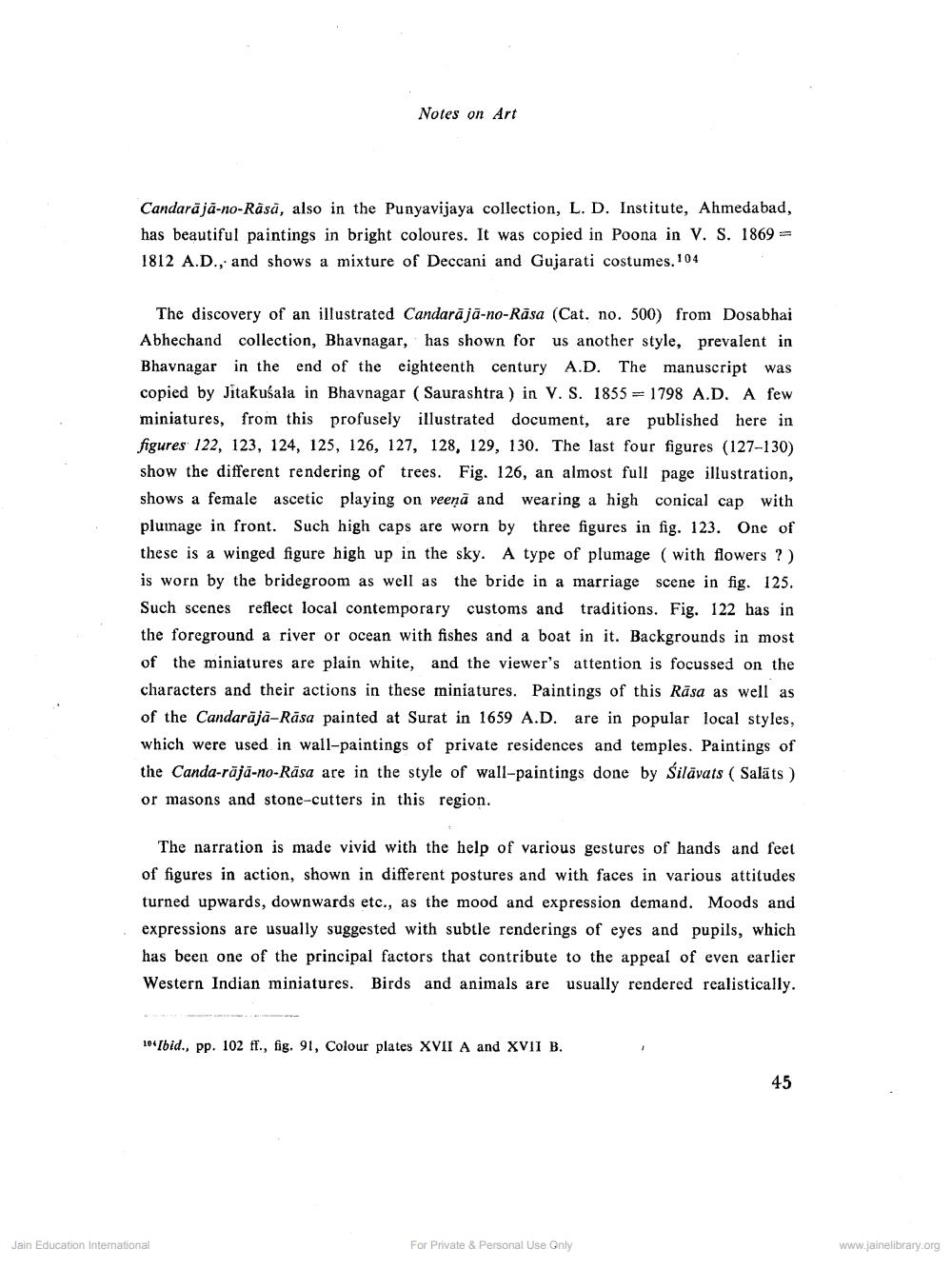________________
Notes on Art
Candarā jā-no-Rāsā, also in the Punyavijaya collection, L. D. Institute, Ahmedabad, has beautiful paintings in bright coloures. It was copied in Poona in V. S. 1869 = 1812 A.D., and shows a mixture of Deccani and Gujarati costumes. 104
The discovery of an illustrated Candarājā-no-Rāsa (Cat. no. 500) from Dosabhai Abhechand collection, Bhavnagar, has shown for us another style, prevalent in Bhavnagar in the end of the eighteenth century A.D. The manuscript was copied by Jitakusala in Bhavnagar ( Saurashtra ) in V. S. 1855 = 1798 A.D. A few miniatures, from this profusely illustrated document, are published here in figures 122, 123, 124, 125, 126, 127, 128, 129, 130. The last four figures (127-130) show the different rendering of trees. Fig. 126, an almost full page illustration, shows a female ascetic playing on veeņā and wearing a high conical cap with plumage in front. Such high caps are worn by three figures in fig. 123. One of these is a winged figure high up in the sky. A type of plumage ( with flowers ?) is worn by the bridegroom as well as the bride in a marriage scene in fig. 125. Such scenes reflect local contemporary customs and traditions. Fig. 122 has in the foreground a river or ocean with fishes and a boat in it. Backgrounds in most of the miniatures are plain white, and the viewer's attention is focussed on the characters and their actions in these miniatures. Paintings of this Rāsa as well as of the Candarāja-Rāsa painted at Surat in 1659 A.D. are in popular local styles, which were used in wall-paintings of private residences and temples. Paintings of the Canda-rājā-no-Rāsa are in the style of wall-paintings done by silāvats ( Salāts ) or masons and stone-cutters in this region.
The narration is made vivid with the help of various gestures of hands and feet of figures in action, shown in different postures and with faces in various attitudes turned upwards, downwards etc., as the mood and expression demand. Moods and expressions are usually suggested with subtle renderings of eyes and pupils, which has been one of the principal factors that contribute to the appeal of even earlier Western Indian miniatures. Birds and animals are usually rendered realistically.
10*Ibid., pp. 102 ff., fig. 91, Colour plates XVII A and XVII B.
45
Jain Education International
For Private & Personal Use Only
www.jainelibrary.org




